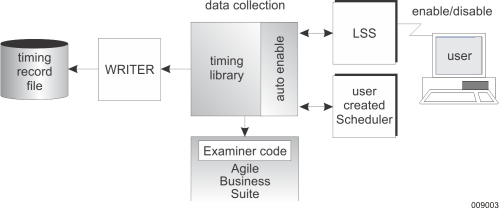The purpose of Examiner is to provide detailed performance data for built online transaction Systems. To provide this, the Runtime application contains code that, when enabled, traces each transaction and collects performance information as the transaction is processed by each structure within your application.
For the purpose of analysis, a transaction is defined as that unit of work from when the input is received from the user terminal to when the last output is sent back to the terminal in response to the initial input.
Information is collected when the transaction enters and exits each structure of the application. Data collected in this trace includes:
Transaction Unique Number
Transaction Code (Ispec)
Timing Point Identifiers
Time into/out of each Ispec
Processor Time
Number of Logical DMS II Operations
System Name and Subsystem Number
User defined data
Once a program gathers all the information needed for a timing point, it calls the collection library to write the information to the trace file. If the collection processes are active, the library calls the WRITER process to perform the write operation asynchronously. If the collection processes are inactive, the library returns to the caller.
You can use the Administration (colon) command :EXM to enable or disable the data collection mechanism, and to specify the location of the timing file.
The data collection software is in two parts: Examiner/LIBRARY and Examiner/WRITER. The figure below shows how the different data collection Ispecs interact.

Examiner Data Collection